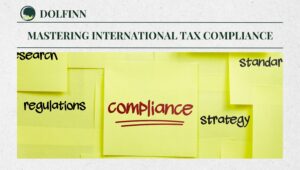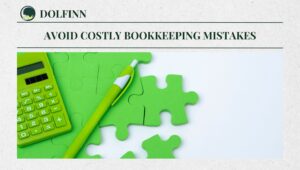
A Comprehensive Guide to Consolidation Accounting
Consolidation accounting is a critical aspect of financial reporting, ensuring transparency and accuracy in representing the financial performance and position of entities with controlling financial interests. The two primary consolidation models under U.S. Generally Accepted Accounting Principles (GAAP) are the Voting Interest Entity (VOE) model and the Variable Interest Entity (VIE) model. This guide delves into these models, their application, and key differences, helping you navigate this complex accounting domain.
Understanding Controlling Financial Interest
A “controlling financial interest” is the cornerstone of consolidation accounting. It determines whether a reporting entity must consolidate another entity. This applies not only to VIEs but also to all legal entities in which a controlling financial interest exists.
To consolidate a legal entity, a reporting entity must:
- Identify the applicable consolidation model (VOE or VIE).
- Assess its relationship with the entity to determine whether consolidation is required.
Each model provides distinct criteria for identifying a controlling financial interest, which is explored in detail below.
Determining the Appropriate Consolidation Model
The choice of consolidation model depends on the nature of the legal entity and the reporting entity’s relationship with it. Below is a flowchart-like approach to making this determination:
Step 1: Is the Entity a Legal Entity?
Confirm that the subject of evaluation is a legal entity. This foundational step is crucial as consolidation guidance applies only to legal entities.
Step 2: Are There Any Scope Exceptions?
Determine if there are exceptions under ASC 810 that exempt the reporting entity from applying consolidation guidance or the VIE model.
- Scope exceptions may arise in certain situations, such as temporary control arrangements or entities with specific industry-related exclusions.
Step 3: Does the Reporting Entity Hold a Variable Interest?
Identify whether the reporting entity has a variable interest in the legal entity. A variable interest often arises from arrangements on the credit side of the balance sheet, such as equity or debt. Complex arrangements like derivatives or leases may require deeper analysis.
Step 4: Is the Entity a VIE?
If the reporting entity holds a variable interest and no scope exceptions apply, assess whether the legal entity is a VIE by evaluating:
- Sufficiency of Equity at Risk: Does the entity have enough equity to support its activities?
- Characteristics of Equity Investors: Do equity investors as a group lack controlling financial interest characteristics?
- Disproportionate Voting Rights: Is the entity structured to benefit an investor with disproportionately few voting rights?
If any of these conditions are met, the entity is a VIE, and the VIE model applies.
Key Differences Between the VOE and VIE Models
Understanding the nuances between the VOE and VIE models is essential for accurate consolidation. Below is a comparison of key aspects:
1. Definition of Controlling Financial Interest
- VOE Model: Consolidation requires ownership of a majority voting interest or majority kick-out rights in a limited partnership.
- VIE Model: Consolidation is based on having both:
- The power to direct activities that most significantly impact the VIE’s economic performance.
- The obligation to absorb losses or the right to receive benefits significant to the entity.
2. Participating Rights
- VOE Model: Participating rights preclude consolidation if noncontrolling shareholders can block significant financial or operational decisions.
- VIE Model: Participating rights must impact all significant activities affecting the VIE’s economic performance.
3. Related Parties
- VOE Model: Related parties and de facto agents are not considered.
- VIE Model: Related parties, including de facto agents, are considered. This can result in a related party consolidating the VIE even if it does not independently hold a controlling interest.
4. Disclosures
- VOE Model: Limited disclosure requirements for consolidated subsidiaries.
- VIE Model: Requires specific disclosures for consolidated and unconsolidated VIEs.
| Aspect | VOE Model | VIE Model |
| Definition of Control | Majority voting interest or majority kick-out rights. | Relative power over significant activities and economic exposure. |
| Participating Rights | Noncontrolling shareholders can block decisions. | Must impact all significant activities. |
| Role of Related Parties | Not considered. | Related parties and de facto agents considered. |
| Disclosure Requirements | Limited disclosure. | Extensive disclosures for consolidated and unconsolidated VIEs. |
Sample Consolidated Balance Sheet
Below is an example of a consolidated balance sheet:
| Particulars | 2024 | 2023 |
| Assets | ||
| Cash and Cash Equivalents | $500,000 | $450,000 |
| Accounts Receivable | $300,000 | $270,000 |
| Inventory | $200,000 | $180,000 |
| Total Current Assets | $1,000,00 | $900,000 |
| Property, Plant, and Equipment | $1,500,00 | $1,400,00 |
| Goodwill | $250,000 | $250,000 |
| Total Non-Current Assets | $1,750,00 | $1,650,00 |
| Total Assets | $2,750,00 | $2,550,00 |
| Liabilities and Equity | | |
| Accounts Payable | $200,000 | $180,000 |
| Accrued Expenses | $150,000 | $140,000 |
| Short-term Debt | $100,000 | $90,000 |
| Total Current Liabilities | $450,000 | $410,000 |
| Long-term Debt | $1,200,000 | $1,100,000 |
| Deferred Tax Liabilities | $100,000 | $90,000 |
| Total Non-Current Liabilities | $1,300,000 | $1,190,000 |
| Common Stock | $500,000 | $500,000 |
| Retained Earnings | $500,000 | $450,000 |
| Total Equity | $1,000,000 | $950,000 |
| Total Liabilities and Equity | $2,750,000 | $2,550,000 |
Practical Implications of the VIE Model
The VIE model often leads to more frequent consolidation than the VOE model due to its broader definition of control and emphasis on relative power. This model requires a deeper understanding of an entity’s contractual arrangements, purpose, and design to make accurate consolidation decisions.
Key considerations include:
- Assessing explicit and implicit contractual agreements.
- Evaluating the economic significance of activities and their impact on performance.
- Considering the role of related parties and de facto agents in influencing consolidation outcomes.
The Future of Consolidation Accounting
The Financial Accounting Standards Board (FASB) has made significant efforts to simplify consolidation guidance. Notably:
- 2016: The FASB initiated a project to reorganize ASC 810 into a new topic, ASC 812, to enhance usability.
- 2021: Feedback from stakeholders highlighted the need for a unified consolidation model, prompting the FASB to shift its focus from reorganization to researching the feasibility of a single consolidation model.
While the reorganization project was removed from the FASB’s technical agenda in 2022, ongoing research aims to address consolidation complexities and establish a streamlined approach.
Conclusion
Consolidation accounting, governed by the VOE and VIE models, is pivotal in accurately reflecting a reporting entity’s financial interests. By understanding the distinctions between these models, companies can ensure compliance with U.S. GAAP and provide transparent, reliable financial information.
As consolidation guidance evolves, staying informed about changes and leveraging tools like ASC 810 and ASC 812 will be crucial for navigating this intricate aspect of accounting.
FAQs
1. What is consolidation accounting?
Consolidation accounting combines the financial statements of a parent company and its subsidiaries, presenting them as a single entity.
2. What are the primary consolidation models?
The two primary models are the Voting Interest Entity (VOE) model and the Variable Interest Entity (VIE) model.
3. How do I determine which model to apply?
Start by assessing whether the entity is a legal entity, identifying scope exceptions, and determining if you hold a variable interest. Then evaluate if the entity qualifies as a VIE.
4. Why does the VIE model often result in more consolidations?
The VIE model requires only relative power over significant activities, making it easier to demonstrate control compared to the absolute power required by the VOE model.
5. What is the future of consolidation accounting?
The FASB is exploring the possibility of a unified consolidation model to simplify and streamline guidance, addressing complexities in current standards.
Summary
Consolidation accounting ensures transparency in financial reporting by reflecting the financial performance and position of entities with controlling financial interests. Explore the VOE and VIE models, their differences, and practical insights to simplify this intricate accounting process.
Latest Posts
- Top Cash Flow Forecasting Tools You Can’t Ignore for Global Businesses

- Mastering Profit vs. Cash Flow: 5 Key Strategies for Financial Success

- 5 Key Advantages and Disadvantages of Outsourced Accounting: Is Outsourced Accounting Worth the Risk?

- Mastering Cash Flow Management in 2025: 7 Proven Strategies for Financial Success

- Mastering International Tax Compliance: 7 Crucial Strategies for Multinational Success

- 5 Common Bookkeeping Mistakes Small Businesses Make and How to Avoid Them

